No one ever wants to think about their dog being in pain or facing a medical emergency. But being prepared to deal with these extremely rare situations can make the difference between life and death.
There are certainly long-term medical issues that we can keep an eye out for, like canine cancer. Yet it is also very important to know what to do if your dog stops breathing or doesn't have a pulse.
This exclusive look at dog CPR can ensure that every dog owner is equipped with the proper skills in the event of a life-threatening emergency.
Knowing how to perform CPR is vital information that I will be sure to keep handy, along with emergency phone numbers for my vet and the nearest animal emergency hospital.
Scroll through below to see how to perform CPR, artificial respirations, and the Heimlich maneuver, should any of them become necessary. Be sure to discuss these and any other canine medical issues with your vet if you have any questions at all.
While most people will never need to perform CPR on their pup, this information is important for everyone to know!
Call For Emergency Assistance
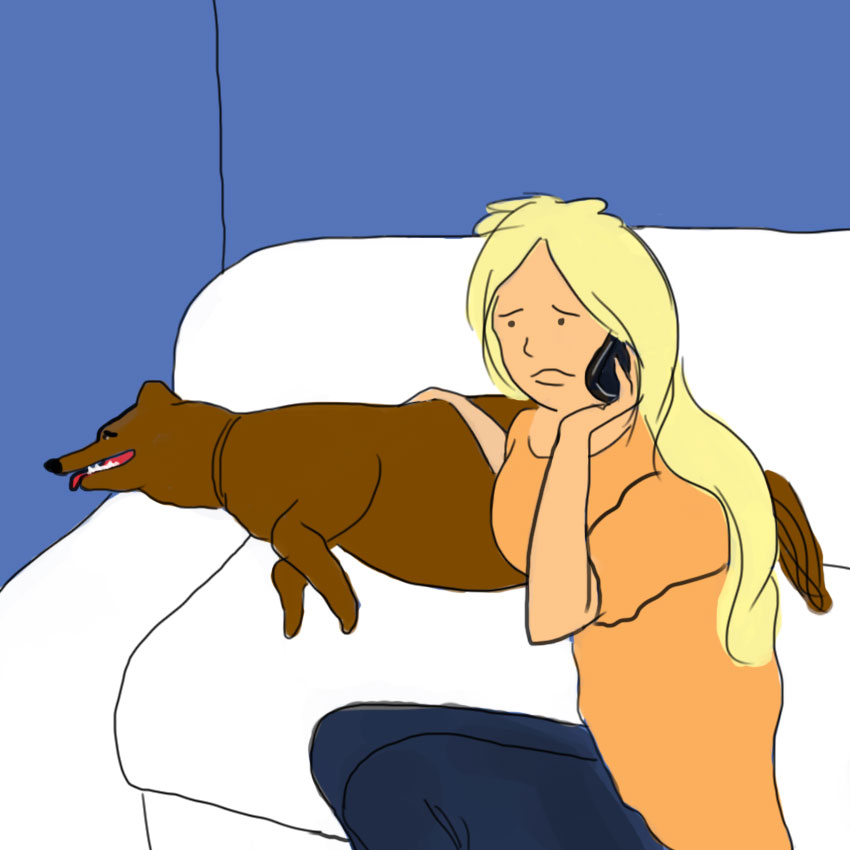
Because it will take time for help to arrive, it is very important to call for emergency assistance as soon as you realize that your dog is in distress.
If possible, have someone else call while you begin to address your dog's needs. However, if you are by yourself, call quickly and start the CPR assessment as soon as you are able.
In preparation for an unlikely emergency, make sure to have the phone number of the vet or emergency animal hospital handy.
Check For Signs Of Breathing
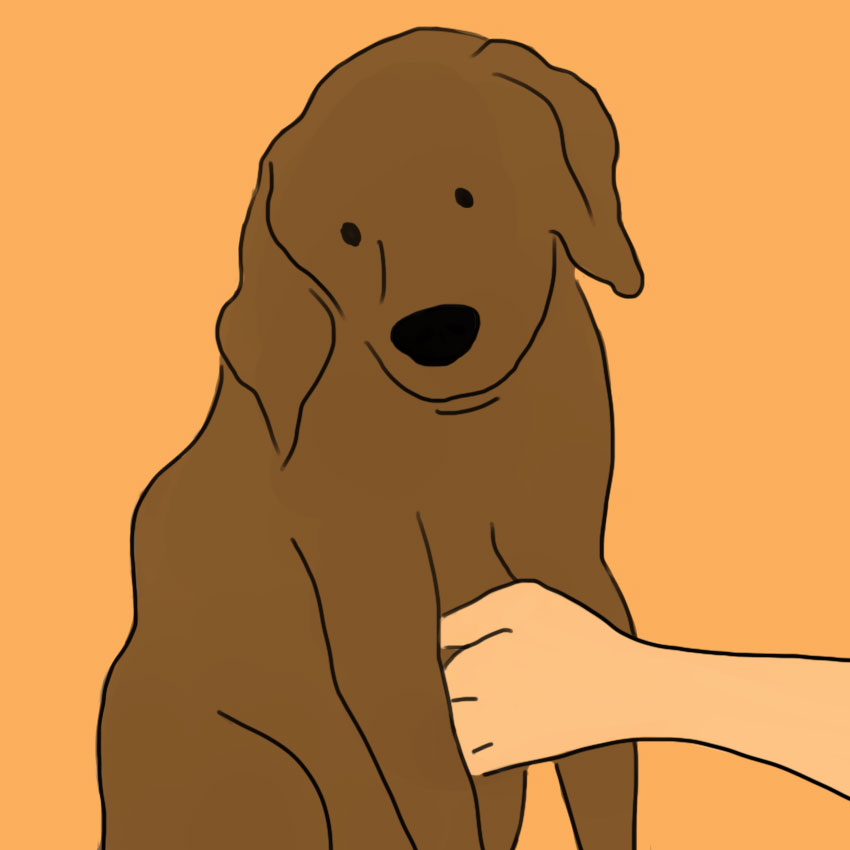
The first thing you need to assess is if your dog is breathing.
CPR is not necessary if your dog is breathing or has a pulse.
To determine if your dog has stopped breathing:
- Observe the rise and fall of the chest.
- Put your hand in front of the dog’s nose to see if you feel airflow.
If your dog is breathing but still in distress, do not perform CPR and get them immediate medical attention.
If your dog is not breathing, continue with your CPR assessment.
Check That The Airway Is Clear
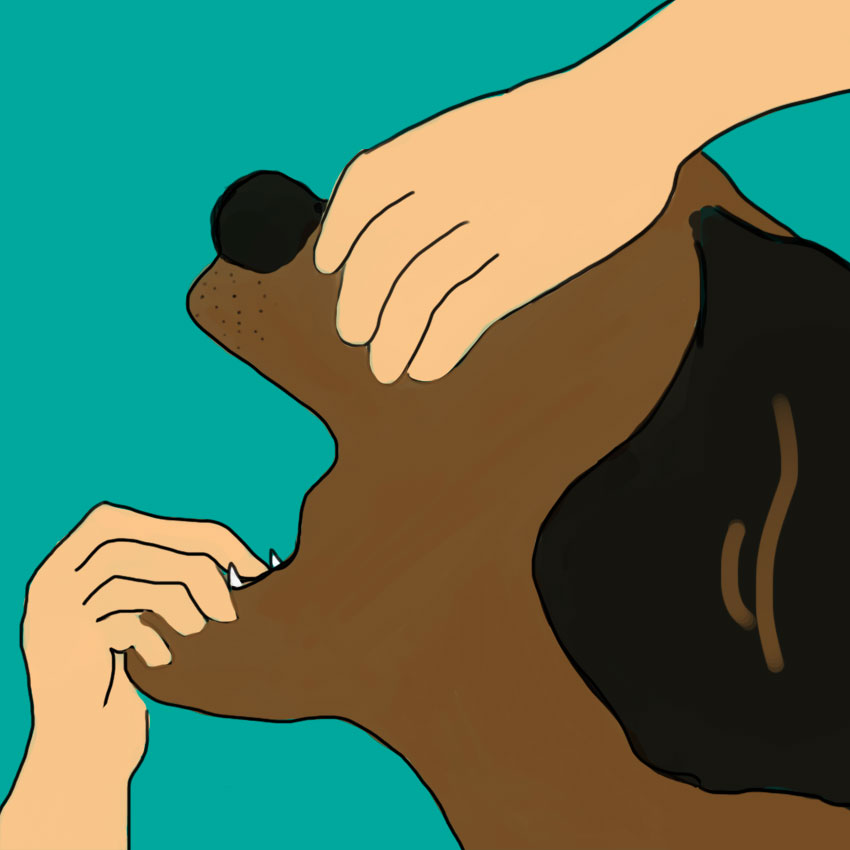
If you have determined that your dog is not breathing, you should next check their airway to make sure it is clear.
If they are choking, or something is blocking their airway, you will need to remove it right away. CPR cannot be performed if something is preventing air from getting to your dog.
Attempt to remove any blockage with your fingers or a set of tongs. If you are unable, you must perform the Heimlich, described below.
If there is no blockage, skip right to checking your dog's pulse.
Perform Heimlich, If Necessary
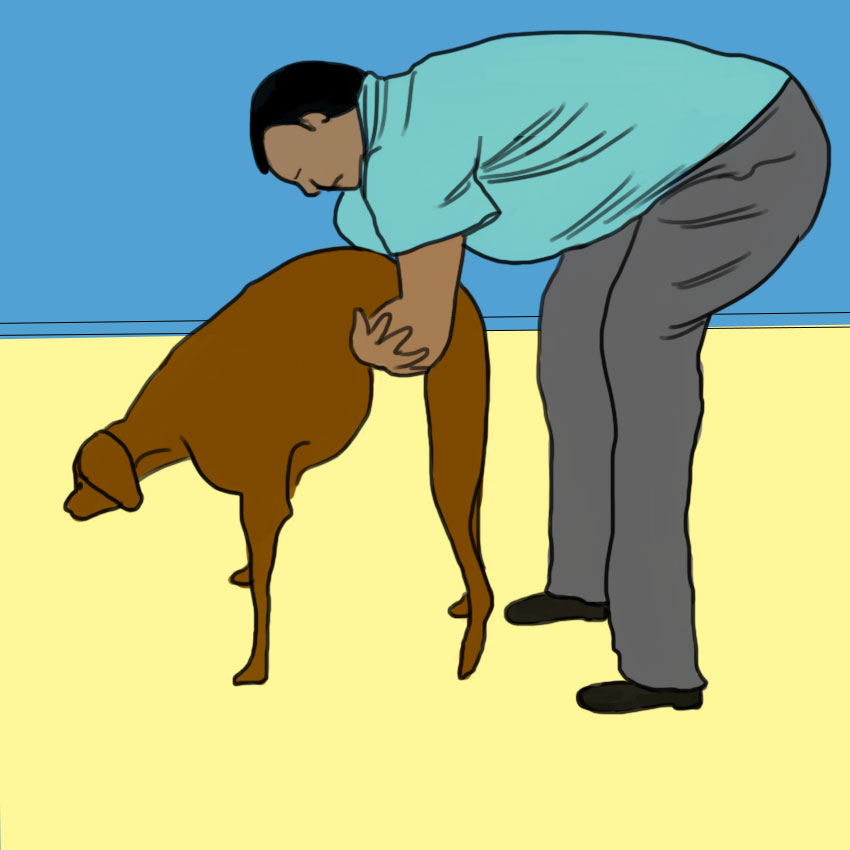
If you discover that something is blocking your dog's airway and you cannot remove it with your fingers, you will need to perform the Heimlich maneuver.
To deliver the Heimlich:
- Stand behind your dog and bend over.
- Place a fist just behind/below their last rib and place your other hand over it.
- Pull in and up, delivering five quick abdominal thrusts.
You should then check the dog’s airway again. If the object is still stuck, perform the Heimlich again.
If the object has come loose, and your dog is still not breathing, continue on to check their pulse.
Check For A Pulse
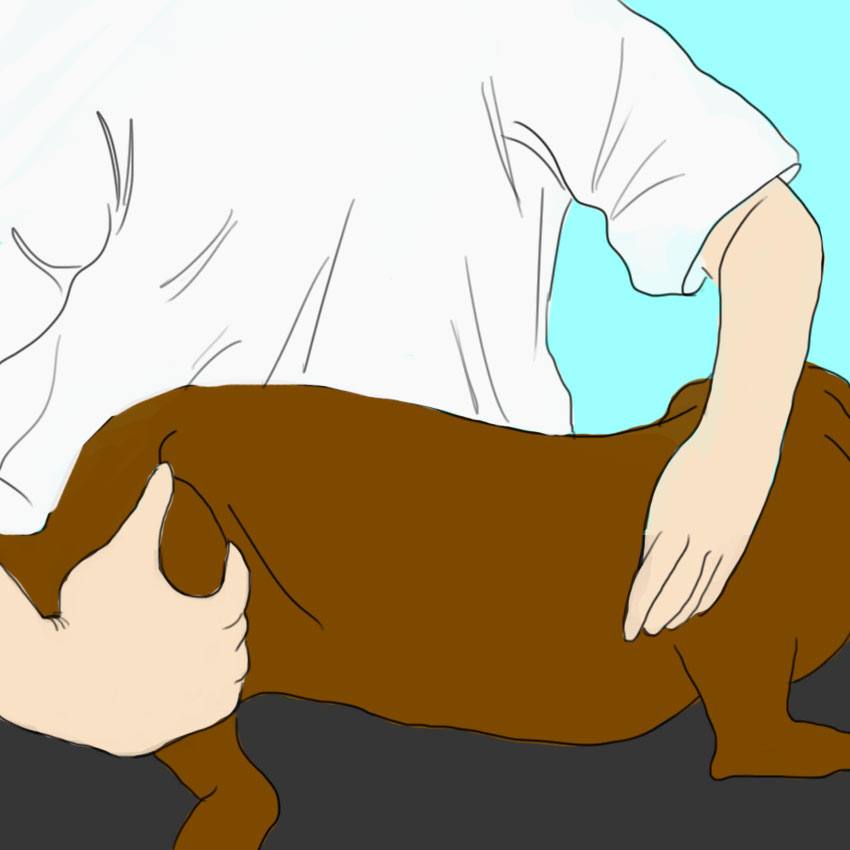
Before performing CPR, you need to check for a pulse.
According to Canine Journal, "The femoral artery, located on the inner thigh, is the easiest place to find your dog's pulse. Run your hand along the inside of the hind leg until you are almost to the point the leg joins with the body.
"There you should feel a slight dip where the femoral artery is closest to the skin. Use your fingers to press down gently and feel for a pulse."
As an alternative, you can also check for a pulse by putting your hand directly on your dog's heart, or by feeling the main pad of the front foot and pressing gently.
If you feel a pulse but your dog is still not breathing, you should not perform CPR, but rather artificial respirations, shown below.
If your dog does not have a pulse, it is time to begin CPR.
Perform Compressions
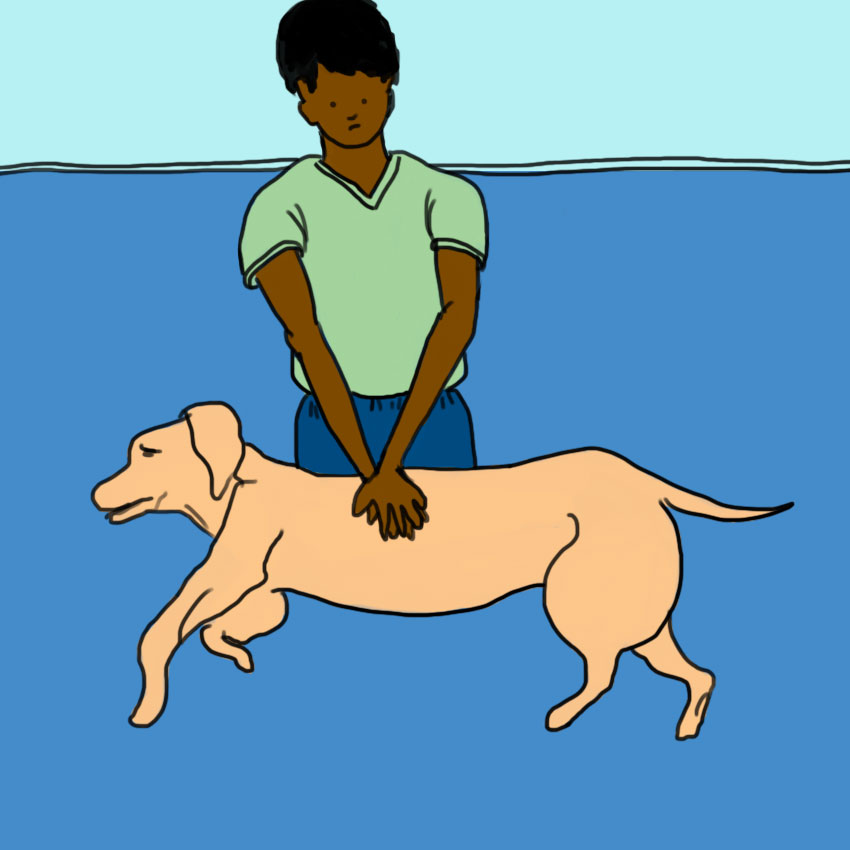
To perform compressions:
- Lay your dog on his/her right side, positioning yourself above their back.
- Cup your palms over one another, directly over the wide part of the ribs. (If you have a very tiny dog – under 30 pounds – you can use your thumb and fingers to squeeze the chest instead.)
- Keep your elbows straight and deliver compressions at a depth of about a quarter of the width of your dog’s chest.
- Deliver compressions at a rate of 100 per minute.
- According to PetMD, if performing CPR alone, you should deliver five compressions before stopping to deliver air.
Deliver Artificial Respiration
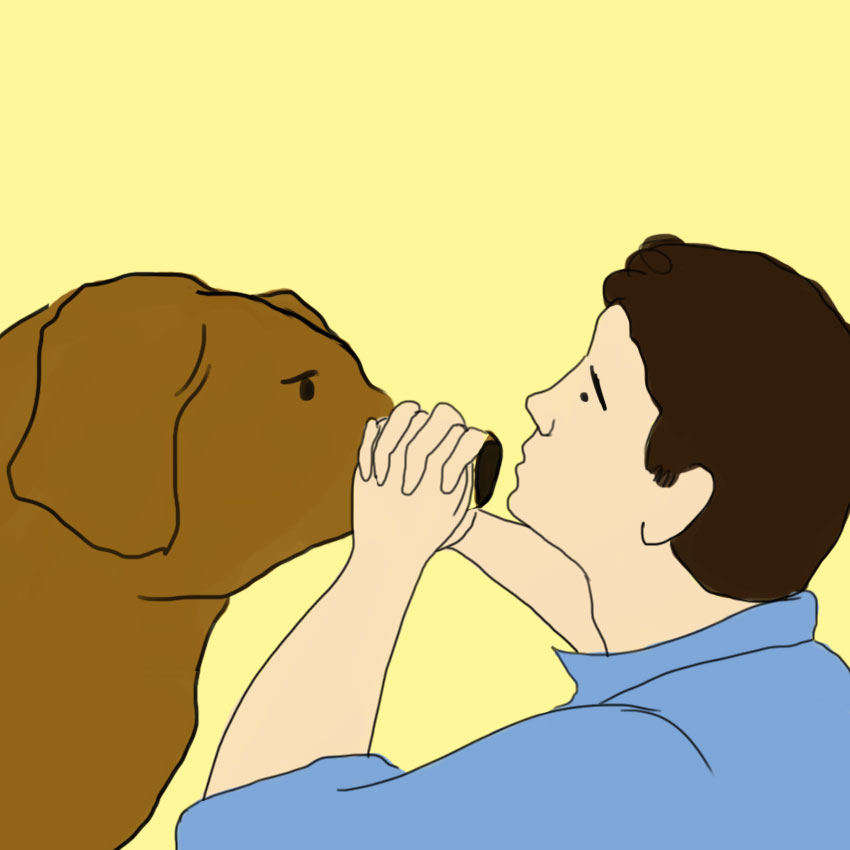
According to PetMD, "If only one person is available, breathe into the dog's nose once for every five compressions that are done. If two persons are available, give artificial respiration once every two or three compressions are done."
To deliver artificial respiration:
- Hold your dog’s jaw completely shut to prevent air from escaping.
- For a large dog, place your mouth over the dog’s nose. For a small dog, place your mouth over the dog’s nose and mouth.
- Blow air into the dog’s nostrils, making sure your dog’s chest expands with each breath.
- Remove your mouth between each breath to allow air to escape.
If performing CPR, return to compressions after each breath is delivered.
If you discovered during your initial assessment that your dog has a pulse but is not breathing, Canine Journal reports that you should "administer one breath every two to three seconds at a steady pace of 20 to 30 breaths per minute."
Check For A Pulse Again
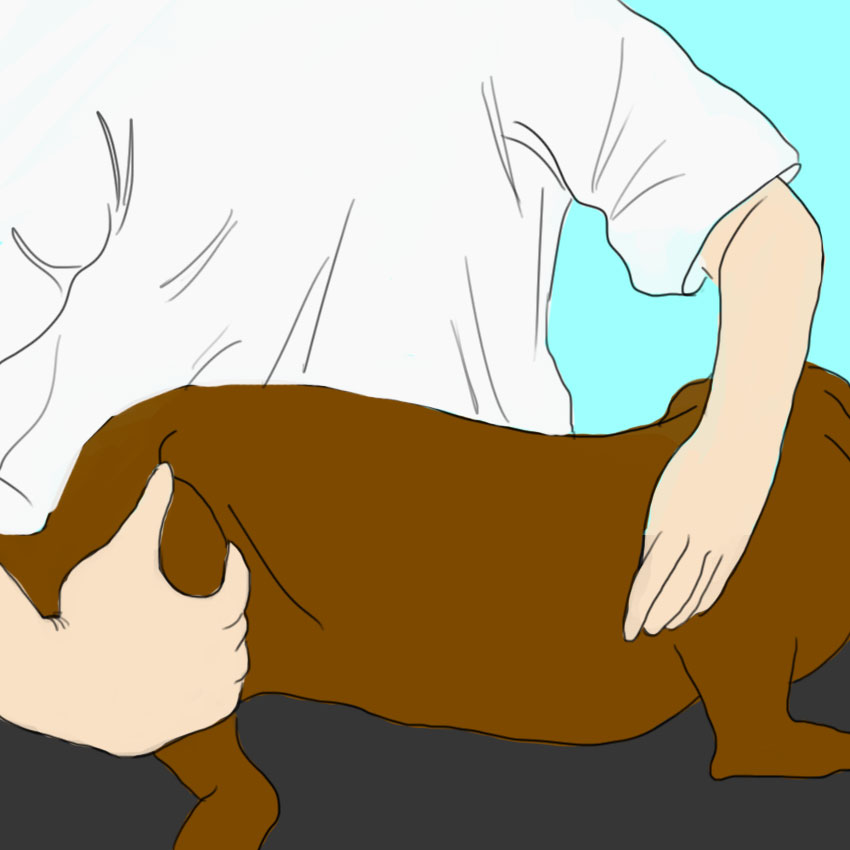
Every two minutes, you should stop and reassess the situation. Check to see if your dog has resumed breathing or has a pulse.
If you discover that they are breathing or have a pulse, discontinue CPR. If they still have no pulse, continue CPR.
Get Emergency Medical Attention
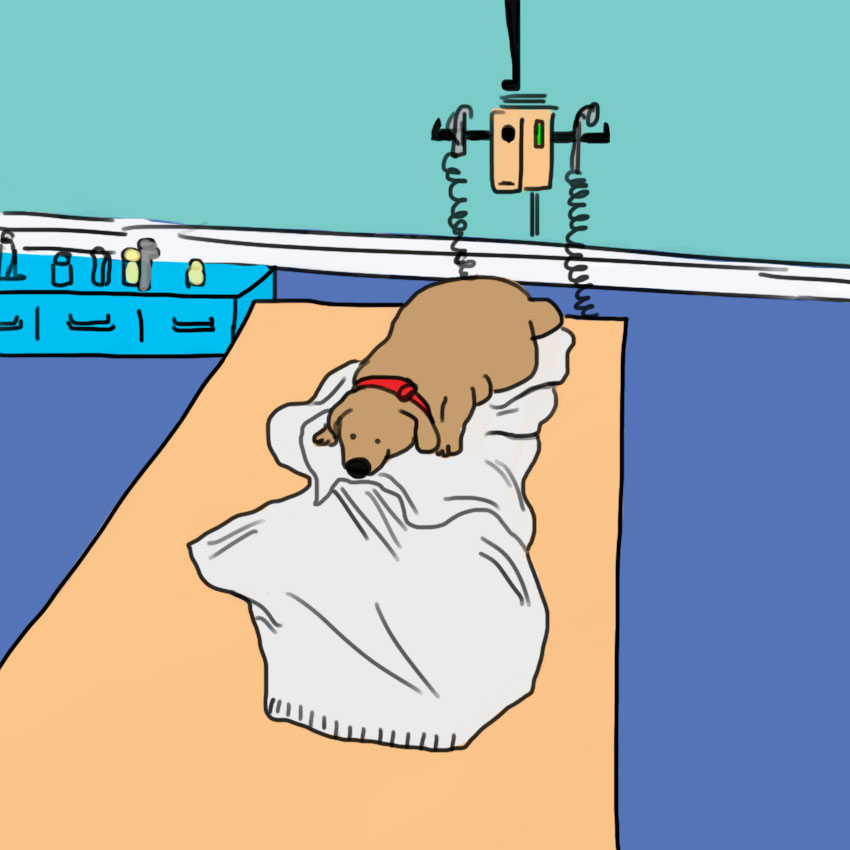
It is important to get your dog emergency medical attention as soon as possible.
While no one ever wants to see their pet in distress, it is very important to be prepared in the case of a medical emergency.
Knowing how to properly assess your dog's situation and deliver CPR could potentially save their life.
If you ever have any questions about CPR and proper emergency procedure, be sure to consult your vet.
Please SHARE this vital, lifesaving information with dog owners everywhere!




